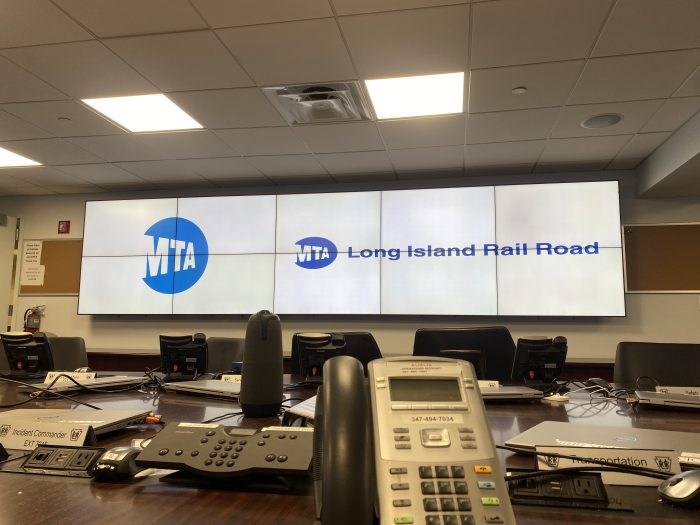MTA chief unveils green diesel plan as possible electrification alternative for Port Jeff Branch
By Nasrin Zahed
The Metropolitan Transportation Authority held a roundtable meeting Thursday, Oct. 19, to discuss notable developments and improvements that are underway on the Long Island Rail Road and other local transit systems, with discussions centering around proposed modernization of the North Shore line of the Long Island Rail Road.
Port Jeff Branch
Under the 2019 Climate Leadership and Community Protection Act, New York State law mandates drastic cuts to greenhouse gas emissions. The electrification of the Port Jefferson Branch — which currently uses diesel-powered locomotives — had been pitched as a means to reduce greenhouse gas emissions. [See “Elected officials, community leaders rally for electrification of LIRR’s Port Jeff line,” June 8, 2022, TBR News Media, and follow-up stories.]
When questioned on the topic, MTA Chair and CEO Janno Lieber emphasized the importance of mass transit in addressing climate change. “Mass transit is the antidote to climate change,” he said.
Lieber confirmed the agency’s commitment to an 85% reduction in emissions and noted that electrification of the Port Jefferson Branch of the LIRR is under consideration as part of this effort. However, he stressed the need to prioritize infrastructure maintenance to ensure the system’s stability before making investments in system expansion projects.
When posed with the question of electrifying the Port Jeff Branch in an effort to reduce Long Island’s greenhouse gas emissions, Lieber countered with the potential implementation of dual transit systems that introduce both clean diesel and partial electric motors to the North Shore line.
“If you’re taking the diesel locomotives and you’re converting them to clean diesel — which has 97% less particulate matter emissions and the ability to run electric when you hit the electrification areas, which are starting in Huntington — you’re dramatically improving the condition,” he said. “You don’t necessarily have to electrify the whole branch of the Port Jeff” line if these upgrades are implemented.
Situated along the Port Jeff Branch, however, lies Stony Brook University — the southern flagship of the State University of New York system and the only SUNY flagship within the MTA’s service area.
When TBR News Media inquired about the potential for upgrading the Port Jefferson line to help further accelerate Stony Brook University’s institutional advancements, Lieber responded that, “Everybody wants our Long Island Rail Road or mass transit system to support our educational institutions, which are, in Stony Brook’s case, part of the regional economy.”
He emphasized the importance of supporting Stony Brook’s growth and expansion but stopped short of specifying details on the matter. He also highlighted how recent improvements in mass transit options have opened up new opportunities for talent recruitment and expanded ridership during off-peak hours, which can benefit these institutions.
Regional transit trends
The meeting continued on a positive note thanks to the recent resurgence of ridership on the LIRR. “Last week, we had both the best week in terms of overall ridership numbers that we’ve ever had since the pandemic began,” said LIRR acting president Robert Free.
In addition to infrastructure and ridership growth, the discussion delved into the importance of supporting transit-oriented development. The primary goal of transit-oriented development, officials said, is to encourage residents to reduce car ownership and rely more on public transportation, contributing to reduced traffic congestion and greenhouse gas emissions.
The East Side Access project, which includes the new Grand Central Madison terminal and roughly 40 miles of additional tracks, allowed the LIRR to increase the number of trains by 40% from pre-pandemic levels, MTA officials noted.
The economic significance of the LIRR was underscored in the meeting, with participants acknowledging its pivotal role in supporting the region’s economy. Access to New York City employment opportunities, as well as facilitating local economic development, makes the LIRR a necessary public asset, easing roadway traffic congestion and reducing pollution. This expansion not only benefits conventional commuters but also facilitates reverse commuting, allowing Long Island businesses to recruit from a broader talent pool. It also enhances intra-island commuting options, benefiting Long Island residents.






